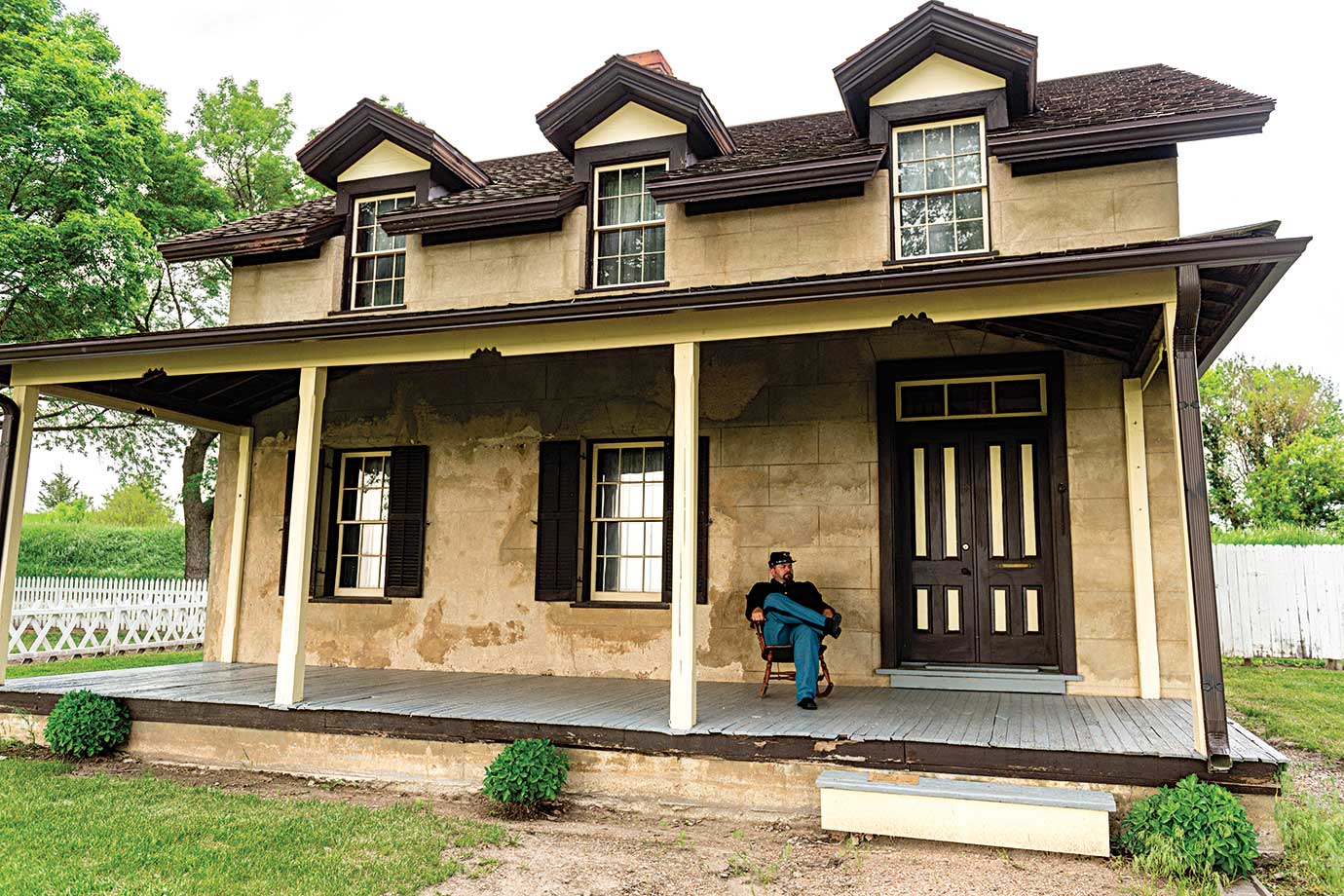To commemorate this historic milestone, Fort Hartsuff is hosting a two-day event Aug. 31 – Sept. 1
Enlarge

Photo by Eric Fowler, Nebraskaland Magazine
By Michaela Clemens
In 1874, a grasshopper plague decimated crops across the Great Plains, destroying the lives of many homesteaders, including those in Nebraska’s North Loup River Valley. During the same time, the perceived threat of conflicts with Native Americans struck fear into settlers, and wildfires in previous years made wood scarce.
Needless to say, life wasn’t easy.
Yet because of these circumstances, the construction of one of Nebraska’s most interesting military outposts — Fort Hartsuff — came to fruition. Located north of Elyria, the fort is now a State Historical Park.
Named for Maj. Gen. George L. Hartsuff, who served in the Seminole War of 1855 and the Civil War, the originally named “Post on the North Fork of the Loup River” was constructed in response to the Lakota raids on Pawnee villages near Genoa and the death of a settler in a skirmish near Pebble Creek, near present-day Burwell, in early 1874.
In September of that year, construction began at a site along the North Loup selected by Maj. Gen. Edward O. C. Ord, then commander of the Department of the Platte. Much of the work was done by settlers from the nearby town of Calamus and elsewhere in the region, who were grateful for work that could see them and their families through the winter.
With little wood available, a lime and concrete mixture was used for the buildings. Soldiers traveled north to Jones Canyon to cut timber for roofs, verandas and trim. They also brought saplings of cottonwoods and pine to plant at the fort, which sat in the open prairie.
The infantry barracks were completed just before Christmas 1874. In mid-January 1875, a fire consumed the officers’ quarters while it was under construction and work had to begin anew on that structure.
The post was originally intended to house two companies, one cavalry and one infantry. By spring 1875, orders from headquarters reduced the size of the garrison to one company of infantry. The structure intended for the cavalry barracks became the quartermaster’s storehouse. Where cavalry officers’ quarters would have been built, a hospital was erected instead. The hospital, laundress quarters, bakery and guardhouse were completed in fall 1875.
The need for the fort was short lived, and it was abandoned in 1881. Thanks to their unique construction, Fort Hartsuff’s buildings outlasted many other forts of the era. By the time the state acquired the site in the 1960s, nine original buildings remained, though many were in significant stages of decay. Restoration of the concrete buildings and reconstruction of other wood structures, like the blacksmith and carpenter shop, by park staff continued well into the 1990s.
As we celebrate the 150th anniversary of its construction, Fort Hartsuff stands today as one of the most complete examples of the small prairie forts from the Plains Indian Wars.
Fort Hartsuff 150th Event
To commemorate this historic milestone, Fort Hartsuff is hosting a two-day event Aug. 31 – Sept. 1 on Labor Day weekend. The celebration will include military and civilian reenactments and demonstrations, speakers, activities for kids, food vendors and more. A detailed schedule of activities will be announced at Calendar.OutdoorNebraska.gov prior to the event.
Daily admission is $4 for those age 13 and older; $1 for those ages 2-12 and free for those 2 and younger. A Nebraska Park Permit is required.
The post Fort Hartsuff Celebrates 150 Years appeared first on Nebraskaland Magazine.
















